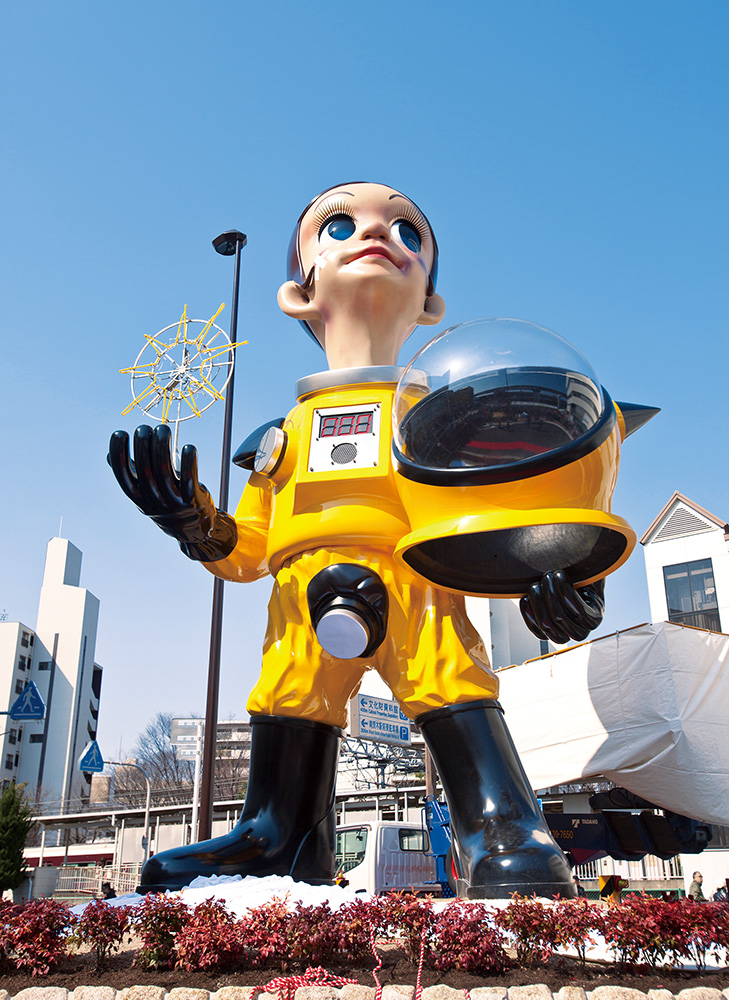(2/2) Sun Child [2011-2012]
Children Looking into the Future
Sun Child is a gigantic sculpture of a child with a height of 6.2meters, which has a
“Small Sun”—a symbol of hope—in its right hand and a helmet in its left. While the child’s face is covered with scars and band-aids, the sculpture symbolizes that a future without radiation has come back in people’s hands. Although the child wears radiation protection clothing, the counter on its chest reads “0”, which is indicative such as of the future.
A year before the Great East Japan Earthquake and Tsunami and the Fukushima Daiichi nuclear accident, Kenji Yanobe presented an installation that dealt with radiation and a great flood at a museum, which used to be a hydroelectric power plant. The installation has been evaluated as a work that gave foresight of the disasters. However, the artist was a so forced to confront the fact that despite his constant effort to raise the alarm over nuclear power, his work could do nothing to prevent the actual disaster.
Consequently, he stopped making works with a cynical intention and decided to make “embarrassingly positive” works to transform reality into a better one for the person concerned. With hopes for recovery and restoration after the disaster, Yanobe elaborated the plan for Sun Child, a monument of hope that would trigger the disaster-affected people to raise up again.
Sun Child was unveiled at Expo’70 Commemoration Park in Osaka in October 2011. After that, three other bodies were created, and traveled inside and outside of Japan including the Taro Okamoto Memorial Museum, Daigo Fukuryu Maru Exhibition Hall as well as Moscow and Israel. In addition, in March 2012, one of them was permanently installed on a traffic circle in front of Minamiibaraki station on the Osaka Monorail and Hankyu Railway in his hometown, Ibaraki City. Sun Child in Ibaraki City is facing toward the disaster-affected Tohoku area, keeping its eyes on their restoration.
In August 2012, he was invited to the Contemporary Art Biennale of Fukushima 2012. In order to reduce the financial burden of the committee, suffering from the lack of funds, he received a shipping fee from his supporters, and exhibited Sun Child at Fukushima Airport, which was one of the exhibition venues of the Biennale. He drew and mailed his drawings to each of the nearly 180 supporters of this project. Yanobe was first anxious whether the work would be accepted by the locals in Fukushima, because it had been only a year since the disaster when the exhibition took place. However, the work got an unexpectedly warm welcome—the exhibition period was extended, and was decked for Christmas. It was when Yanobe realized the significance to voice from Fukushima.
In 2013, Sun Child as exhibited as one of the central works of the international art festival Aichi Triennale 2013, in which the theme was “the world after the disaster.” The work has been shown continuously in and outside Japan. One could say that this large-scale sculpture became a public figure beyond his personal expression, and has become a monumental work in the the artist’s career.
